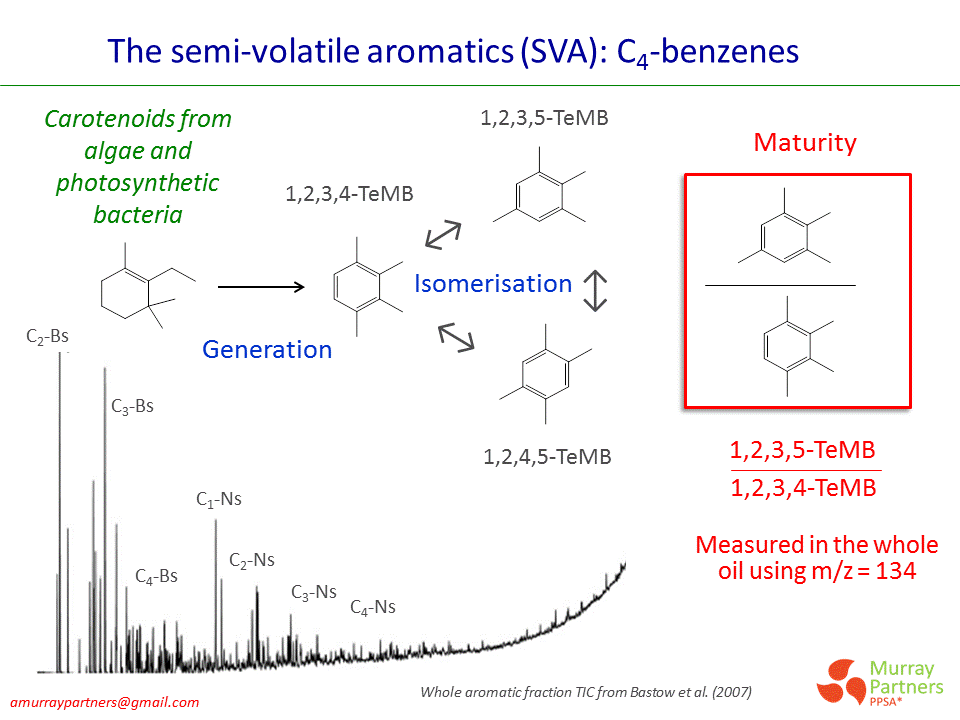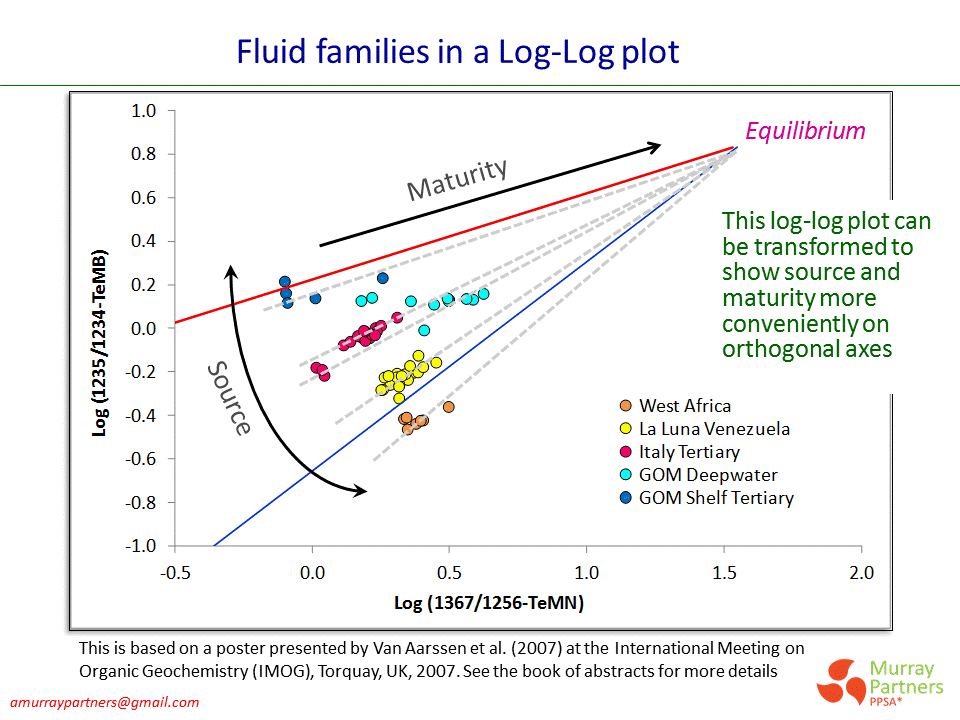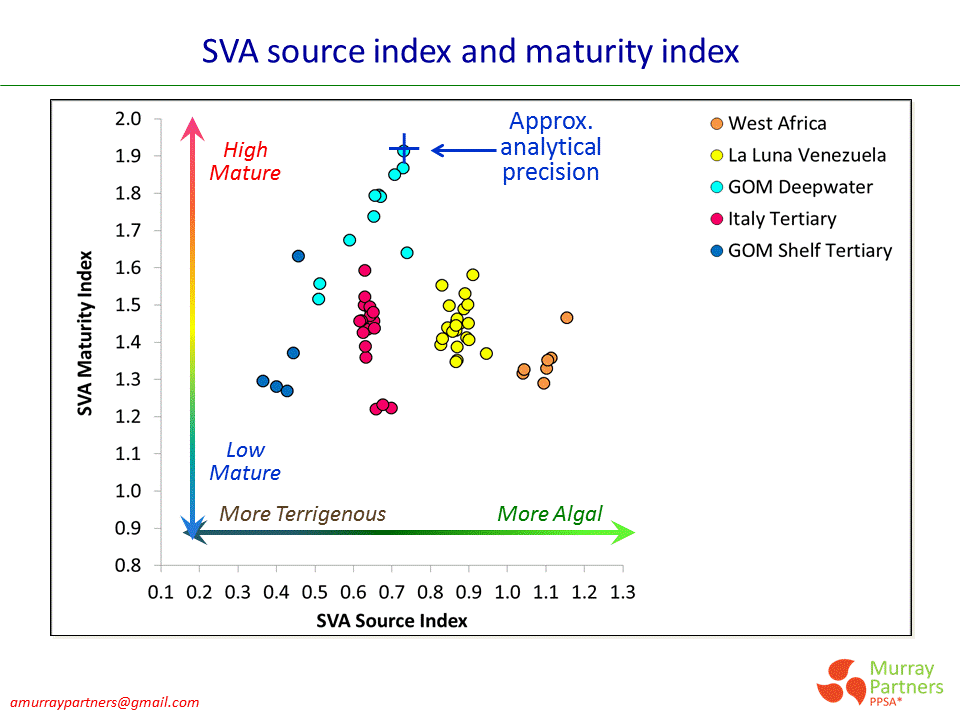Many geochemical reports also speak about the "thermal maturity" of a fluid. It is not always clear what is meant by this term but generally it seems to mean the maturity of the source rock from which the fluid was expelled. There are several kinds of geochemical maturity indicators, but most are either based on systematic relationships among gas isotopes (carbon or hydrogen), on ratios formed from isomeric compound pairs having differing thermal stability (e.g. sterane or methyl phenanthrene isomers) or on the concentration of thermally resistant compounds such as the diamondoids. Fluids with more of the thermally stable species or isomers are considered to have been expelled from a source rock at a more advanced stage of kerogen conversion.
There are several fundamental problems with the concept as described above - but that is a topic for another day. For now, I would like to describe just one method of saying something about the "maturity" of a fluid sample. This is a method based on the relative abundance of two tetramethyl benzenes and two tetramethyl naphthalenes. These are mono- and fused diaromatic compounds containing 10 and 14 carbon atoms respectively. These compounds have boiling ranges straddling the range where we most commonly see a change from a gas-condensate fluid to a volatile oil. For convenience we call them the "semi-volatile aromatics" or "SVA". The method has been in use in a few companies for several years but has never been published, except in the form of a poster presented by Ben Van Aarssen at the International Meeting on Organic Geochemistry (IMOG) in 2007. A description of the method can be found in the book of abstracts for that conference. At that time, the SVA "maturity index" had not been calibrated to an equivalent vitrinite reflectance for the expelling source rock. There is also an SVA source index - derived from the same compounds and analysis - which gives an indication of degree of "algal" vs. "terrigenous" organic matter contribution to the source rock.
Some aspects of the SVA method are described below. I hope to get the time to write it up properly over the next year (in conjunction with Ben Van Aarssen). The bottom line is that it gives (we believe) a more robust indication of relative fluid maturity than most other methods. This arises from (a) a clear separation of the source and maturity effects (b) a basis in compounds which are present in reasonably high concentration in both gas condensates and oils and (c) a response range that extends from the earliest onset of fluid expulsion to well beyond the point at which gas becomes the dominant product. Calibration to absolute source rock maturity is more problematic - and may not even have a simple physical meaning, as described in the last few few figures. This is an issue of particular relevance to shale oil/gas plays where - as per the previous blog entry - we often want to know how much of the fluid we produce was generated locally as opposed to being migrated in from more mature section elsewhere.
Happy Modeling :)









